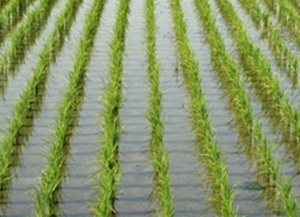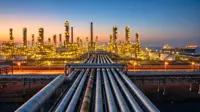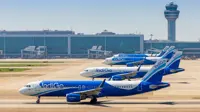India continues to be the fastest-growing economy in South Asia even as growth in Asia Pacific’s major economies continues to remain firm despite new trade tensions in the region, Asian Development Bank (ADB) said in a new report released today.

Growth in Asia Pacific’s developing economies for 2018 and 2019 will remain solid as growth continues apace across the region, despite rising tensions between the United States and its trading partners, says a new Asian Development Bank (ADB) report.
In a supplement to its Asian Development Outlook (ADO) 2018 report released last April, ADB forecasts 2018 growth for Asia and the Pacific at 6.0 per cent for 2018 and 5.9 per cent for 2019, in line with its previous projections. Excluding Asia’s newly industrialised economies, growth is forecast at 6.5 per cent in 2018 and 6.4 per cent in 2019, also unchanged from April.
“Although rising trade tensions remain a concern for the region, protectionist trade measures implemented so far in 2018 have not significantly dented buoyant trade flows to and from developing Asia,” said ADB chief economist Yasuyuki Sawada. “Prudent macroeconomic and fiscal policymaking will help economies across the region prepare to respond to external shocks, ensuring that growth in the region remains robust.”
The ADO published in April had said that India's economic growth will rise to 7.3 per cent this fiscal and further to 7.6 per cent in the next financial year, retaining the fastest-growing Asian economy tag, on back of GST and banking reforms.
In East Asia, growth picked up in Hong Kong, China and Taipei,China, though growth forecasts are unchanged for the subregion at 6.0 per cent in 2018 and 5.8 per cent in 2019. The world’s second-largest economy, the People’s Republic of China, is projected to meet previous forecasts of 6.6 per cent in 2018 and 6.4 per cent in 2019, as the government’s efforts to rebalance growth toward domestic consumption remain on track.
South Asia, meanwhile, continues to be the fastest growing subregion, led by India, whose economy is on track to meet fiscal year 2018 projected growth of 7.3 per cent and further accelerating to 7.6 per cent in 2019, as measures taken to strengthen the banking system and tax reform boost investment. In both Pakistan and Bangladesh, agriculture recorded notable improvement over the last year, surpassing expectations and driving growth.
In Southeast Asia, growth projections for the subregion remain unchanged at 5.2 per cent in both 2018 and 2019, as robust domestic demand continue to support economies in the region. Higher public investment boosted first quarter growth in Indonesia, the Philippines, and Thailand, while private investment was strong in Viet Nam.
Central Asia is growing faster than expected, prompting an upward revision to forecasts from 4.0 per cent to 4.2 per cent in 2018 and from 4.2 per cent to 4.3 per cent in 2019. The rise in global commodity prices and the related recovery in the Russian Federation have boosted growth across much of the subregion. In Kazakhstan, Central Asia’s largest economy, growth picked up to 4.1 per cent in the first quarter of 2018, higher than 3.6 per cent recorded for the same period of 2017, backed by stronger than expected industrial recovery, including increased investment in commodity extraction and government-led industrialization programmes.
In the Pacific, growth is expected at 2.2 per cent and 3.0 per cent over the next two years as the region’s largest economy, Papua New Guinea, continues to slow due to the impact of the February earthquakes on production and exports of liquefied natural gas and other export commodities.
The report now projects lower inflation for developing Asia at 2.8 per cent for 2018 and 2.7 per cent for 2019. Domestic factors, including central bank intervention to avoid sharp currency depreciations, and the reintroduction of food and fuel subsidies to contain the effects of rising commodity prices in some economies, helped contain inflationary pressures.
ADB, based in Manila, is dedicated to reducing poverty in Asia and the Pacific through inclusive economic growth, environmentally sustainable growth, and regional integration. Established in 1966, it is owned by 67 members — 48 from the region. In 2017, ADB operations totaled $32.2 billion, including $11.9 billion in cofinancing.























